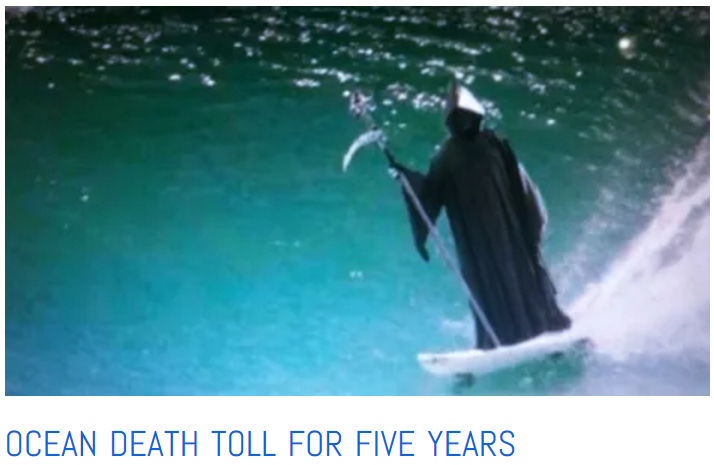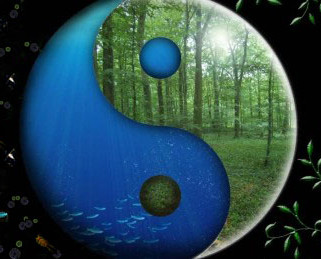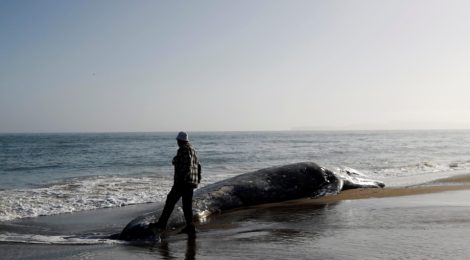
Evolution Lives and Dies Within Speed Limits… Its Dying Time.
The Horror, 10,000 Paper Meta-Analysis Shows Climate Change Driving Inevitable Mass Extinction
Life cannot adapt as fast as our macho human climate driving habits are forcing
It’s not a new story of mankind’s reckless speeding endangering the law (of Nature) abiders
Animals adapting too slowly to the changing climate, its dying time.
New research published in the Journal Nature shows Animals are not adapting fast enough in response to the changing climate. It’s not new news though this survey/meta-analysis of 10,000 scientific papers pretty much turns denial of this cataclysm into a pathological condition. That the aggressive speeding, indeed road rage, behaviour is making it dying time for much of Nature is a tragic testimony.
The paper makes clear that it is of vital importance to assess whether countless species can respond to changing environmental conditions – for example by shifting the timing or location of breeding and rearing of young. Might such shifts enable the survival of populations in the long run. Clearly, very few afflicted species can adapt.
To study this dilemma an international team of more than 60 researchers evaluated more than 10,000 scientific studies. Their paper showed that although animals do commonly respond to climate change, such responses are in general insufficient to cope with the breakneck speed of rising/changing temperatures.
“This study is among the first to explore the limits of what Nature can cope with in the long term and the picture is not very positive. ” Says, co-author Dr Hassall, from the School of Biology at Leeds.
“A great deal of environmental damage has been carried out under the assumption that the planet is able to absorb substantial amounts of human activity.
“This study is among the first to explore the limits of what nature can cope with in the long term and the picture is not very positive.
“Our results suggest that prolonged climate change is going to have serious negative consequences for many of the numerous species that are vital to the continuing function of the natural world.”
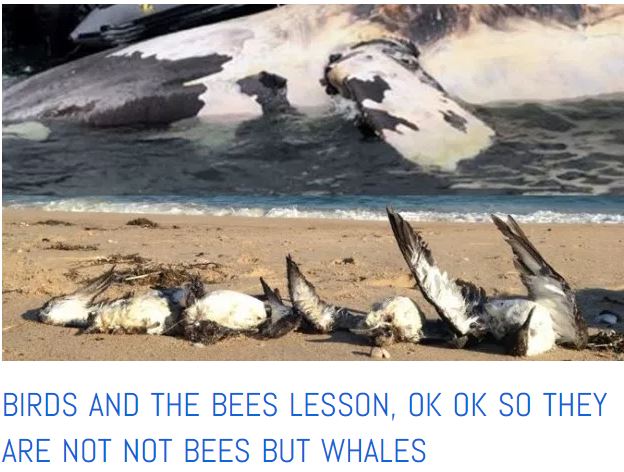
Whales and seabirds are starving everywhere as their ocean plankton pastures become clear blue deserts. Click to read more
The most commonly observed response to climate change is an alteration in the timing of biological events such as reproduction, rearing of young, hibernation, or migration, known as phenological traits (traits tied to timed behaviour). Breeding seabirds are still nesting on the same islands are often finding that the plankton pastures that once were close to their nests have become clear blue lifeless deserts and they are unable to feed their hatchlings. Migrating whales are washing ashore starved to death in numbers many times those ever recorded as seen in the photo at the top of this post.
The researchers, led by the Leibniz Institute for Zoo and Wildlife Research in Germany, extracted relevant information from the scientific literature to relate changes in climate over the years to possible changes in phenological and morphological (physical) traits. Next, they evaluated whether observed trait changes were associated with higher survival or an increased number of offspring.
Dying Time
They looked at published research covering over 1,400 different species, but only 71 studies contained enough information to be included in their analysis. Those 71 studies were almost entirely bird species, which are frequently used as indicators of the wider ecological community. Many of the birds were seabirds that are proving to be amongst the best indicator species as they are dependent on the blue part of this blue planet. It is in the oceans where the impact of humanities relentless speeding, fueled by fossil fuels, has imposed the faster than Nature rise of CO2 on this blue planet.
“Our research focused on birds because complete data on other groups were scarce”, says lead author Dr Viktoriia Radchuk from the Leibniz Institute for Zoo and Wildlife Research.
“We demonstrate that in temperate regions, the rising temperatures are associated with the shift of the timing of biological events to earlier dates.”
The study reports that some of bird species are undergoing adaptive change in response to the climate, they are doing so at a pace that does not match what is necessary to guarantee their survival. Even the most common and adaptive species such as the great tit, European pied flycatcher and the common magpie, which are known to cope with climate change relatively well are in dramatic decline.
“Adaptive responses among rare or endangered species remain to be analyzed. We fear that the forecasts of population persistence for such species of conservation concern will be even more pessimistic”, concluded Professor Stephanie Kramer-Schadt from the Leibniz Institute for Zoo and Wildlife Research.
The scientists hope that their analysis and the assembled datasets will stimulate research on the resilience of animal populations in the face of global change and contribute to a better predictive framework to assist future conservation management actions. But is academic hope and more research enough? I think not! One has to wonder why these ‘scientists’ mince their words so carefully. They might better be marching on the streets in front of parliament demanding action to solve this deadly dying time dilemma.
Here’s What We Must Do, Starting Immediately
Our oceans that cover 72% of this Blue Planet are not all a single uniform bowl of distant blue water. Just like land, there are areas of the oceans where pastures flourish or in times of drought perish. We all know that it is from our pastures that we obtain our food, this is true whether those pastures be on land or out at sea. When we take good care of our pastures and we are blessed with plenty of rainfall those pastures flourish and provide us with a cornucopia of food in abundance.
The Ocean Drought
There is an ocean crisis that has been proceeding largely out of the public eye for decades. It is an ocean pasture drought, though it is not a drought where no rain falling rather it is a drought where no dust is falling. As everyone knows pastures on land are filled with growing green grass when there is plenty of rainfall. Pasture grass grows in rich mineral soil and all it needs is for the blessing of rainfall and all of life is rewarded.
Ocean pastures contain their own form of ‘grass’ it’s called plankton or more properly phytoplankton, plant plankton. The ocean pasture is all water so the grass of ocean pastures doesn’t need water it grows in it. What ocean pastures must have is what pastures on land have in super-abundance – dirt containing the vital minerals that plants must have to grow. For decades the amount of dust blowing in the wind and the ‘dustfall’ blessing for ocean pastures around the world has been in the death grip of a terrible drought. The result is that ocean pastures today are producing half or less of the plant life they did 50 years ago.
The English writer Walt Whitman once said, “All beef is grass.” Truer words were never spoken. And indeed I say “all fish is plankton.”
The reason for the terrible ocean dust drought is all about our CO2. We humans have emitted nearly a trillion tonnes of CO2 in the past 100 years of our fossil fuel age – that CO2 is changing our planet. First and foremost CO2 is nourishing plants on land and even helping them not need nearly as much rainfall to be well watered and flourishing – covering the ground. It is called ‘global greening.”
Dust For The Oceans Will Restore The Plankton Blooms
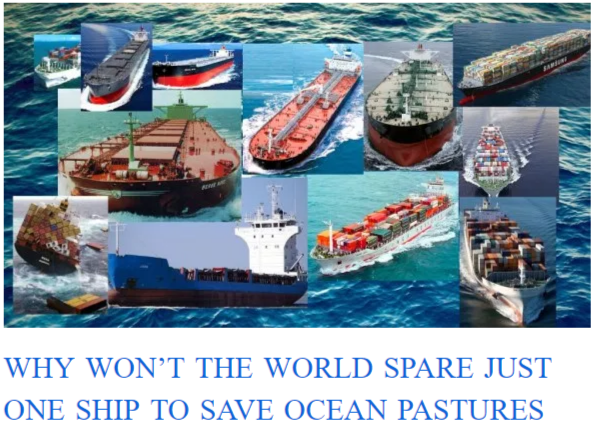
Every year 11 billion tons of cargo is shipped around the world by more than 60,000 large cargo ships. They carry hundreds of millions of tons of iron and other ores, countless barrels of oil, thousands of trainloads of grain, millions of new cars and trucks, clothes, TVs, computers, frozen and canned fish, cattle, sheep, fruits, vegetables… the list is nearly endless. Transporting these goods from port to port is what makes and keeps the world’s human economies and societies fed but leave hurt and harm in their wakes, all for the miserly denial of just one ship. Click to read more
By drafting or seconding one ship out of the world’s vast fleet to carry mineral-rich rock dust out to replenish selected dying ocean pastures those pastures will immediately, within weeks, return to the condition of health and abundance of time before mans technological carbon boot began destroying ocean pastures. The cost of this work is most remarkable because the work can be done at an incredibly low cost.
Suitable mineral prescriptions will globally cost mere millions each year, carrying the life regenerating mineral dust to the ocean again just a few millions each year. Compare this with the trillions of dollars proposed for new carbon taxes by the Paris Accord and you might see why the miserly refusal to supply just one ship is happening. You need do nothing more than follow the money to understand.
This ocean science and technology has been the focus of intensive academic study for a quarter of a century at the expense of a quarter of a billion dollars in research funding. It has now been proven via my work to be safe, sustainable, effective, inexpensive, and immediately available for global deployment. The cost is barely measurable in the total cost of global ocean shipping. The only question why this is not being deployed to save the oceans and our world immediately.
The paper, published in the journal Nature Communications, is titled ‘Adaptive responses of animals to climate change are most likely insufficient’, and is available online here: https://www.nature.com/articles/s41467-019-10924-4









